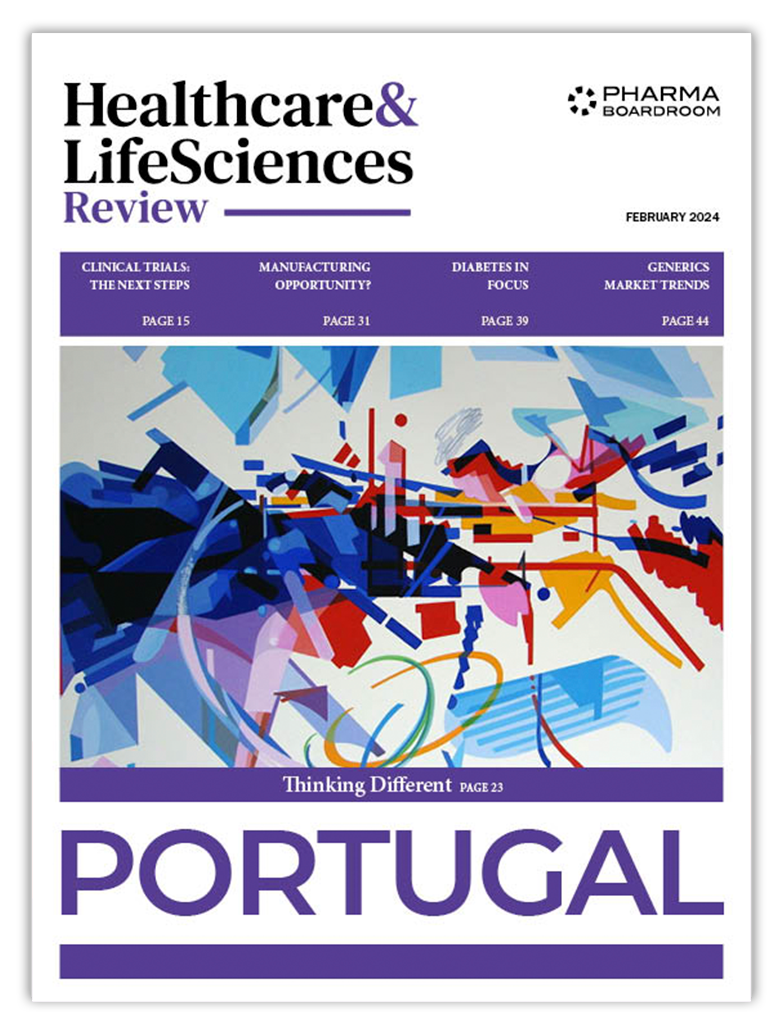Hatem Hachicha is Pfizer's former manager for Tunisia, Libya and French-speaking African countries. He believes Tunisia’s pharmaceutical industry development will be achieved through internationalization and a shift towards biosimilars drugs. Co-founder of SEPHIRE and an active member of the Tunisian healthcare community, he stresses that one of the challenges in Tunisia is to prevent public medicine from falling behind private services despite the fact that Tunisia reserves nearly 7% of its GDP to public health, one of the highest rates in Africa. In addressing this issue, universal access to care and innovative therapies would be guaranteed. He also documents the manner in which the private sector benefits from the development of medical tourism.
All the stakeholders of the health industry in Tunisia know you. Could you detail your career path to our readers?
After a doctorate in pharmacy at Paris V University, I chose to follow a master’s in marketing management at ESSEC business school in France, which allowed me to build strong scientific and commercial awareness in the pharmaceutical industry. In 1992, following a two-year professional experience at Rhone Poulenc (now Sanofi group), I started working in the pharmaceutical sector in Tunisia. Because of my long experience in the field and my work within different companies of Sanofi and Pfizer as well as my responsibilities as a co-founder of SEPHIRE, I have collaborated with many health professionals, both in the public and private sectors. I had the idea to create SEPHIRE: an association with the purpose of developing the partnership between the innovative actors of the health sector, health authorities and learned societies, in order to improve access to innovation for our Tunisian fellow citizens.
Could you give us an overview of the health system in Tunisia?
Two sectors co-exist within the Tunisian health system. On the one hand, the private sector is highly developed and offers services of impeccable quality. Moreover, it is the reason for the medical tourism currently expanding within Tunisia and for which the potential for growth remains strong. On the other hand, the public sector covers the entire Tunisian territory, allowing access to basic care even in the most remote areas. The public sector is challenged by the necessity to leverage on larger budgets to continue developing medical specialties and equipment that match the current situation in Tunisia.
How do governmental changes affect the work of public health services?
[Featured_in]
System optimization strategies cannot be implemented in the short term. The fundamental transformation of the health system and its financing can only be achieved if the measures proposed by a government are put in place and implemented over the long term. Currently, seven percent of GDP is devoted to health. This is good, especially in comparison with other countries in the region, but health services are evolving rapidly. The financial needs of hospitals are urgent and growing due to the evolution of the treatments and the increasingly sophisticated diagnostic tools. The health authorities must find a solution to put in place means to ensure regular investment in the public health services as to ensure the best quality of service available to Tunisians.
How have the revolution and ministerial changes affected private sector companies in the pharmaceutical industry?
With regard to privately held companies, the sector remains stable even in times of crisis because health products are essential goods. The revolution was, in a certain manner, an opportunity for the pharmaceutical industry. The events in Libya have led us to receive thousands of Libyan patients and, as a result, witness a very important growth of the sector. More specifically, the sector boasted double digit-growth for two consecutive years following the revolution whereas this growth would average six to seven per cent annually before the revolution. Since then, the market has stabilized to between zero and two percent annual growth, but the quantities traded are at a higher level than before 2011. Shortly after the revolution, we also witnessed greater levels of attention from health authorities thanks to the intensification of exchanges with companies. Although many issues remain unresolved, particularly in the case of the legislative framework, we have seen concrete outcomes such as the shortening of market access approval times.
Looking further into the case of multinational enterprises, the relationship ties between the subsidiaries and parent companies have evolved as a consequence of the slowdown in the pharmaceutical market in the last three years. Obtaining funds to invest has become more difficult because Tunisian subsidiaries compete for these with subsidiaries in countries that are currently growing faster than in Tunisia. In line with a rational reasoning, parent companies invest more in a country with eight percent growth than in a country that has two percent. As a result, several Tunisian subsidiaries were faced with fiscal restraint measures by reducing the scope of the company’s operations in the country. The restraints call for human resource and marketing investments savings. Companies will be in a position to renegotiate funds and invest according to pre-established ratios once growth picks up again.
[related_story]
I am confident our country will regain growth in the future. Indeed, the average expenditure in emerging economies remains less than that of developed markets. Tunisian health spending is expected to increase and business revenues in the pharmaceutical industry with it.
What are the possible development paths for the Tunisian pharmaceutical sector in the years to come?
First, Tunisia must increase its exports to avoid a domestic price war that would weaken its national pharmaceutical laboratories. Indeed, the severe decrease of their margins would jeopardize the possibility for them to invest in export market opportunities. It should be highlighted that only five percent of Tunisia’s production is exported. Furthermore, establishing oneself in a new market requires significant means that go beyond the simple obtaining of a marketing authorization, more specifically to finance the promotion of Tunisian products. Tunisia has an excellent reputation for the quality of the treatments it develops. However, a majority of Tunisian pharmaceutical companies are family-owned and do not have the critical size to adequately finance their internationalization. The Tunisian government, which wants to develop exports of medicines and health products, must also implement additional support measures for companies wishing to expand internationally: support for participation in international congresses, legislative framework for develop subcontracting, and logistical support for example.
Second, Tunisia needs to start looking at biosimilars and biotechnology in general, because this is where the future of therapies, and therefore the most interesting margins lie. Several Tunisian companies have begun investing in the development of biosimilars. Only the transition to a new type of product is expensive for a company. The Sidi Thabet’s Biotechpole initiative is an excellent example of a public-private partnership that will allow companies to develop their own biosimilars at a low cost.
What are the challenges facing the Tunisian pharmaceutical industry and the payers in terms of innovation and access to care?
Even though many Tunisian companies invest in research and especially development, discovering and launching new molecules require larger firms and the intensification of public private partnerships to financially support research.
Additionally, along with personalized medicine, nanotechnology, robotization, and molecular targeting, access to innovative treatments and to advanced therapies that cost increasingly large sums to the payer pose a challenge for our health authorities. Indeed, companies must render innovations profitable within increasingly short periods of time that fit within the duration of a patent. In turn, this affects the cost of treatments.
As a matter of fact, out of 10000 molecules screened in a development laboratory today, only one will be marketed. The patent protects this molecule for 20 years, but 10 years of this protection has been spent testing the molecule before it is commercialized and costs about one billion dollars.







